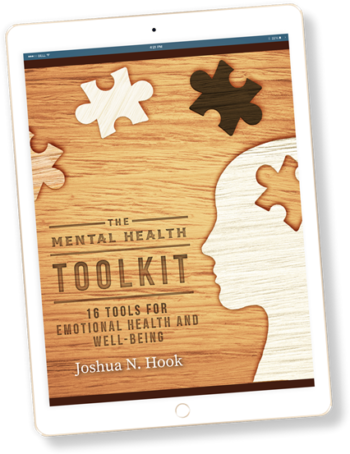12 Steps to Complete a Thesis or Dissertation in Psychology
August 26, 2018
Categories: Psychology
The most difficult thing to do in graduate school is to complete your thesis or dissertation project. The thesis or dissertation can seem like such an overwhelming project—sometimes people don’t even know where to start. There can also be a lot of anxiety around the thesis or dissertation that holds people back. I wrote this post to help people break their thesis or dissertation project into steps that can be completed one at a time. For the steps that are a bit less concrete, in addition to explaining the step, I also give an example from my own experience in italics. Disclaimer: This is how I mentor my students to help them complete their thesis or dissertation. Your advisor might have a different process. When in doubt, always follow your advisor’s instructions.
Step 1: Think about your Career Goals
The first step is to think about your career goals, as these goals will influence the scope of your project. The key distinction is whether your goal is to be in a career where you need publications (e.g., academia or research) or not. If you need multiple publications (and some first-author publications) to get a job in your desired field, you should design your project in such a way that you will get a few publications out of it. As my advisor Everett Worthington used to say, never do anything for a single purpose! If you don’t need publications to accomplish your career goals, I still would encourage you to have the goal of publishing your primary study from your project. I think it is important to learn how the publication process works, and the reason we do research is to discover AND disseminate new knowledge. We don’t do research simply to have a dusty book that sits on a shelf in a library that no one will ever read. That said, if you don’t need multiple publications to achieve your career goals, your project can be more modest.
When coming to graduate school, I wasn’t completely decided on my career goals, but I thought I wanted to do some combination of teaching and counseling. Since teaching was a goal of mine, I knew that I would need publications (some first-author) when I graduated. Thus, my thesis and dissertation projects were fairly large in scope. In both cases, I published my literature review as a separate study. I also conducted multiple empirical studies as a part of each project. My thesis involved 4 studies, and my dissertation involved 2 studies. Both projects resulted in multiple publications.
Step 2: Decide on a Topic
This is one of the more difficult steps. Deciding on a topic isn’t usually a one-time decision point. Instead, it is a process of narrowing and honing in on the topic you would like to study. Usually when you begin your process, you have a general idea of a topic you find interesting. However, often you aren’t sure what specific question you would like to examine, and you don’t have a sense of what prior research has been done on the topic. Thus, you need to start doing a lot of background reading on your topic. You should summarize the articles you read. I like to do this in a chart. Doing background reading not only alerts you to the existing research in your area, but it also gives you a sense of what the unanswered questions are. Often at the end of research studies, authors will give a list of ideas they have for future research. These ideas can be building blocks for your project. You want to figure out what the next frontier of research is that is waiting to be completed in this area. This is where you want to be.
One question when narrowing and honing in your topic is how much to narrow? I think this is an individual question and one that your advisor should help you with as you go along. It also depends on your research area and how much previous research has been done on your topic. For example, forgiveness is probably too broad. Forgiveness in married couples is still probably too broad. Forgiveness of infidelity in married couples might be getting closer.
Usually the topic for your project is a mix of your interests and your advisor’s interests. Ultimately, it needs to be something that you are interested in, because you are going to be devoting two years (or more!) of your life to this project. When you are finished, you will probably be the most knowledgeable person in the world in your area. Even projects that I was very interested in when I started working, I grew tired of them by the project’s end. That just happens. But if you start out working on something you aren’t interested in, it will be difficult to maintain your motivation. That said, ideally your project will also be something that your advisor is interested in and knows something about. The reason for this is that your advisor is going to be helping and guiding you as you complete your project. If you are doing something that your advisor knows nothing about, they can help you to a point in the basic research process, but they won’t really be able to guide you as well in regard to content because they don’t have an in-depth sense of the existing literature.
When I entered graduate school, I worked with two mentors, because my primary mentor was on sabbatical. So I was trying to come up with a topic that mixed the research interests of my primary mentor (forgiveness, marriage, religion), my secondary mentor (African American psychology, race-related stress, cultural coping strategies), AND my own. My first thought was to examine the relationship between culture and forgiveness. I hadn’t seen a lot of research in this area, so I thought it might be a good area. So I started reading. And reading. And reading. And making a chart. As I continued to read and get a sense of the existing literature, I noticed there was work in a few different areas. One area was forgiveness in countries that had gone through a major conflict (e.g., Protestants/Catholics in Ireland, Truth and Reconciliation Committee in South Africa). Another related area was in-group/out-group forgiveness. Most of the research, though, focused on differences in forgiveness between participants who were more collectivistic and participants who were more individualistic. I decided to focus on that topic: the relationship between individualism/collectivism and forgiveness.
Step 3: Literature Review
I usually advise my students to construct their literature review in such a way that it will result in a separate, first-authored publication. To do this, you need to conduct an original and thorough review of the literature on a specific topic. Here are the steps:
1. Make sure no one has published a recent literature review on your topic. If someone has published a recent literature review, it is a waste of time to re-do their work. You need to brainstorm a different angle or somewhat different topic. Your advisor can help you with this.
2. Make sure your literature review is at the correct level of specificity. Too broad, and there will be too many articles to review. Too specific, and there won’t be enough. A good rule of thumb is somewhere between 20-30 studies. There are exceptions to this rule. If your topic is interesting and you think a review is necessary, you can get away with fewer studies. You can definitely do a review with more studies, but it will take a lot of time and effort.
3. Decide what type of literature review you will conduct—narrative review of the literature or meta-analysis. Meta-analysis is better, but will take some extra time and effort to learn.
4. Perform an exhaustive search of the literature.
- Use multiple databases.
- Keep track of the dates and results of your search.
- Do some work to get file-drawer studies. Your advisor can help you with this.
- Make a chart and summarize the study information as you read.
5. Once you have completed your literature search and chart, you can begin writing.
- Although related to your actual empirical study, your literature review should stand alone as its own publication.
- Organize your literature review like an empirical journal article, with sections for the introduction, method, results, and discussion.
- Summarize results by topic and point you are trying to make. Do not summarize results by study.
- Your literature review should end with specific areas for future research.
- Tell a compelling story.
My dissertation was an effectiveness study on religious couple therapy. In trying to decide how to write my literature review, I realized I could not write a literature review on religious couple therapy because there were only a few empirical studies on the topic. So I broadened the topic to religious therapies. There were quite a few empirical studies (maybe too many), but I was getting closer. In my reading, however, I found a recent review of the literature from 2 years ago. This review was a pretty good study, and it was a meta-analysis. So I was back to the drawing board, trying to find an angle that would be interesting and publishable. I ended up reviewing only studies that used randomized clinical trials, and evaluated the efficacy and specificity (two terms used in the randomized clinical trial literature) of religious therapies. This killed two birds with one stone. It provided an interesting angle that had not been considered before, and it reduced the number of studies included in my review to a more manageable number (around 20).
Step 4: Design your Study
This is one area where your plans might diverge depending on your career goals. In all cases, one goal should be to publish your empirical study. Publishing your research is the capstone of the research process. It disseminates the new knowledge that you discovered to the general public. However, the scope of your project might vary depending on your career goals. If your career goal requires publications, you should design your empirical studies in order to get two or more publications. This often means that you will conduct multiple studies. These studies will hopefully build on each other and be programmatic. If your career goal does not require publications, you still want to conduct a high-quality study that will result in a publication. However, it is probably not necessary to try for multiple publications. In practice, the volume of work can be less, and one or two studies will probably suffice.
My thesis research (collectivism and forgiveness) involved four separate data collection efforts, all using college students. The first three studies developed scales to measure constructs that I deemed important to the study of collectivism and forgiveness. The fourth study was the main empirical study that examined the relationships between collectivism, forgiveness, and forgiveness-related constructs. My dissertation research involved two separate data collection efforts. The first was a nationwide survey of religious couple therapists. The second was an effectiveness study of religious couple therapists and their clients.
Step 5: Write your Method Section
After you write your literature review and design your study, you need to write your method section for your study. Your method section includes the following sections:
1. Participants: Description of the sample of your study, including the expected demographics.
2. Design: Description of the design of your study (e.g., cross-sectional, longitudinal, experimental).
3. Measures: Description of each measure used in your study.
- Description of construct measured
- Number of items
- Example item
- Endpoints of rating scale
- Evidence for reliability
- Evidence for validity
4. Procedure: Description of the procedure. After reading the procedure of your study, a reader should understand exactly what you did and be able to replicate the study.
- Recruitment of participants
- Consent
- What exactly participants did
- Debriefing
- Compensation
5. Hypotheses and Planned Analyses: This section explains each of your hypotheses in detail
- Statement: Statement of the hypothesis
- Justification: Background information explaining why you believe this hypothesis will be supported
- Analysis: Statistical analysis you will conduct to test your hypothesis
Step 6: Propose your Project
After writing the literature review and method section, you are ready to propose your thesis or dissertation project. There are several steps to prepare for the proposal.
1. Choose your committee. There are several things to consider when selecting your committee.
- Does the potential committee member do research that is related to your topic? If so, they might be a valuable asset.
- Does the potential committee member have expertise in an area that will be helpful in your completion of the project (e.g., a statistical analysis you need to learn)?
- Do you get along with the potential committee member? Do you feel as if they have your best interests in mind? Is the potential committee member “on your side”?
- Does your advisor get along with the potential committee member? In a perfect world, this shouldn’t matter, but I have seen students get the short end of the stick when committee members have had disagreements. It is best to avoid all that, so make sure to run your committee by your advisor.
2. Ask your committee members if they are willing to serve.
- Email each committee member asking if they would be willing to meet with you to discuss your project.
- When you meet, briefly explain your planned project, and why you would like them to be on your committee.
- Hope for the best 🙂
3. Prepare your presentation.
- Prepare a PowerPoint presentation.
- Introduce the topic and any terms that the committee needs to know in order to understand your study. However, don’t spend too much time on your literature review and background information. The committee cares most about the actual study you are going to conduct. Spend the majority of your time explaining the method of your studies.
- Don’t prepare too long of a presentation. Although you will schedule a two-hour time slot, I would plan on about 45-50 minutes of talking, with the rest of the time allotted for questions and discussion.
- Practice, practice, practice. It is helpful to schedule a practice run in front of your advisor and other students in your lab.
4. Schedule your presentation. Schedule a two-hour block of time. Plan ahead; it is difficult to get multiple faculty members to get on the same schedule.
5. Print out copies of your project and circulate to committee members at least 2 weeks in advance of your presentation.
6. Do the presentation.
- Bring food and drinks. It always helps to put committee members in a good/relaxed mood.
- Dress professionally.
- Relax… You are the expert on this topic. You have been working on this project for more than a year. This is your time to shine and explain what you have prepared. Have fun with it.
- Be gracious when answering questions and discussing the project. The purpose of having committee members is so that you can work together as a team to complete the best project possible. Committee members will come up with ideas or problems that you may not have thought about. This is good. It is better to identify and fix problems now rather than wait until after data have been collected and it is too late. Most suggestions will be relatively minor and easy to incorporate. Some committee members may have suggestions that will alter the nature of the project, or add quite a bit to your workload. In this case, it is okay to discuss why you chose to design your study the way you did, and come up with a compromise solution.
Step 7: Conduct your Study
After the proposal has been passed, it is time to actually collect data. Congratulations! This is one of the more exciting parts of the research process. Unfortunately, it is also sometimes one of the more difficult and time-consuming parts of the research process. There are a few steps to conducting your study.
1. Submit your study proposal to your university’s institutional review board (IRB). This is the board that ensures that you are conducting ethical research. Your advisor will help you through this process.
2. Prepare for data collection. Depending on what your study entails, this may involve several things.
- If online, type surveys into your online survey program.
- If not online, print out copies of questionnaires.
- Organize and meet with research assistants.
- Type out detailed study procedures.
- Schedule data collection.
- Oversee data collection.
- Organize compensation.
3. Collect your data!
Step 8: Analyze your Data
Analyzing your data is a time-consuming process. It is helpful if you are thorough and systematic.
1. Take some time and look over your data. Examine the descriptive statistics—means, standard deviations, etc. Make sure all scores are within the range of expected values. Get a broad sense of what your data are telling you.
2. Check your assumptions, and make adjustments if necessary.
- Missing data
- Outliers
- Normality
3. Start your data analysis with your “hypotheses and planned analyses” section. This will be a good start and hopefully answer most of your main questions.
4. Conduct exploratory analyses. It is important to have a data analysis plan, but you generally need to conduct additional analyses. Your data have a story; it is your job to tell what that story is. Your advisor will help you through this process.
Step 9: Write your Results Section
There are a few key sections for the results section.
1. Begin with a paragraph explaining how you tested for assumptions, and what you did to resolve problems with assumptions.
2. Then, move into the main section of your results. It is usually best to organize your results section by your hypotheses.
- Remind the reader of your hypothesis. The first hypothesis was that women would be more forgiving than men.
- Explain how the hypothesis was tested (e.g., what analysis you used). This hypothesis was tested using an independent samples t-test with forgiveness as the dependent variable and gender as the independent variable.
- Say whether the hypothesis was supported or not. This hypothesis was supported.
- Report the finding in words. Women were more forgiving than men.
- Report the finding in statistics. Women had a mean forgiveness score of 10.52 (SD = 2.65), and men had a mean forgiveness score of 8.11 (SD = 2.28), t(52) = 4.52, p < .001.
- Then move on the next hypothesis, and so on.
Step 10: Write your Discussion Section
There are a few key sections for the discussion section.
1. In the first part of your discussion section, discuss the main findings.
- Review main finding.
- Relate the main finding to previous theory and research. Is your finding consistent? Is your finding inconsistent?
- What does your finding mean? Why is this important?
- Then go on to the next main finding, and so on.
2. Discuss the limitations of your study.
3. Discuss areas for future research.
4. Discuss implications for counseling practice.
5. Wrap it up.
Step 11: Prepare your Final Defense Document
Most of the paper is written at this point. A few things to think about.
1. Give the paper a thorough edit.
2. Make sure the paper adheres to APA style.
3. Add the Cronbach’s alphas for your current study to the method section.
4. Prepare your reference list.
5. Prepare your appendices (e.g., informed consent sheet, copies of measures, etc.).
Step 12: Defend your Project
Same comments as proposing your project.
YOU DID IT! See, it wasn’t THAT bad, was it?

Related Thoughts

Subscribe To My Newsletter
Join my mailing list to receive the latest blog posts.
Receive my e-book “The Mental Health Toolkit” for free when you subscribe.




